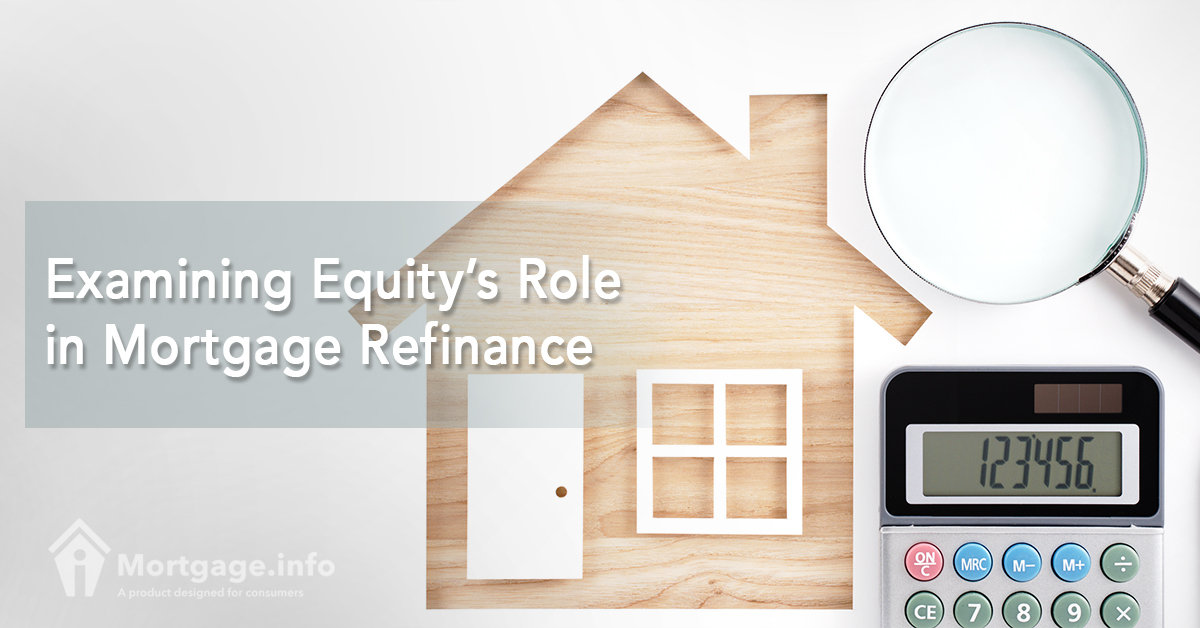Equity plays an important role in mortgage refinance, helping determine if you qualify for a loan or not. Having adequate equity is enough reason to refinance into lower rates. Yet, having little or none can be a hurdle to the process but is with remedies. Find out what these options are and what you can do overall to improve your home’s value. »Get to know lenders here.»
20% Equity, 80% LTV
Equity is the difference between the current balance on the loan and the appraised value of the property. For example, if your loan balance is $80,000 and the value of your property is $100,000, the equity is $20,000 or 20%.
Your equity determines LTV, which is loan-to-value ratio. LTV is how much you owed on your mortgage divided by how much your property currently costs if in the market. Using the above variables, your LTV will be 0.8 or 80%.
It’s believed that you would need an equity of 20% or an LTV ratio of 80% or less in order to refinance. Having a 20% equity gives you choices or even a good leverage to get better terms and rates from lenders.
However, even if you only have 5% equity, you can still do a refinance. But this loan may be subject to:
(i) a private mortgage insurance (PMI) to secure repayment of the loan.
(ii) a higher amount to put down to close the loan, also known as cash-in refinancing.
(iii) higher rates and fees.
Lenders may waive any of the above requirements if you’ve shown good payment history, etc. This holds true for homeowners that have been affected by economic circumstances that have pushed home prices to drop. In matters like this, it’s always best to ask lenders directly if they offer flexibilities for higher LTVs or low equity. »Talk to a lender today.»
Little to No Equity Mortgages
If you’ve been good in making mortgage payments and current on your mortgage debt, you can consider these options for refinancing:
1. FHA Streamline Refinance for homeowners with FHA-insured loans: This program targets homeowners with little or no equity in their homes. Consequently, FHA Streamline Refinance does not require a property appraisal. Mortgage insurance under the FHA Streamline Refinance is made of two types: an upfront mortgage insurance payment and an annual mortgage insurance premium fee payable in 12 months. The FHA is strict on loan costs not being included into the loan, which closing costs must be paid by the borrower in cash. If the lender agrees to pay the costs, this would result in a higher-rate loan.
2. VA Streamlined Refinance for homeowners with VA-backed loans: VA’s Interest Rate Reduction Refinance Loan Program does not require an appraisal when applying for a refinance. No mortgage insurance is also required. Plus, the VA allows for no-out-of-pocket refinances, that is closing costs can be rolled into the new loan.
3. HARP® for homeowners with Fannie Mae and Freddie Mac loans: The Home Affordable Refinance Program® offers refinancing for homeowners with underwater mortgages, regardless of LTV. Mortgage insurance depends on whether your previous loan has one. Closing costs can be included in the loan amount, provided that it should not exceed the prevailing conforming loan limits. »Find out more about equity and refinance.»
Equity and You
Your LTV is determined through an appraisal, an important stage in any loan purchase or refinance application. As an LTV can help make or break a deal, it’s essential to pay attention to these things when you plan to refinance:
- Reduce your loan principal by making monthly payments on a regular basis or paying a bit above your minimum monthly payments.
- Make your home well-maintained and ready for an appraisal. If you make improvements, be sure they’ll add value to your home.

